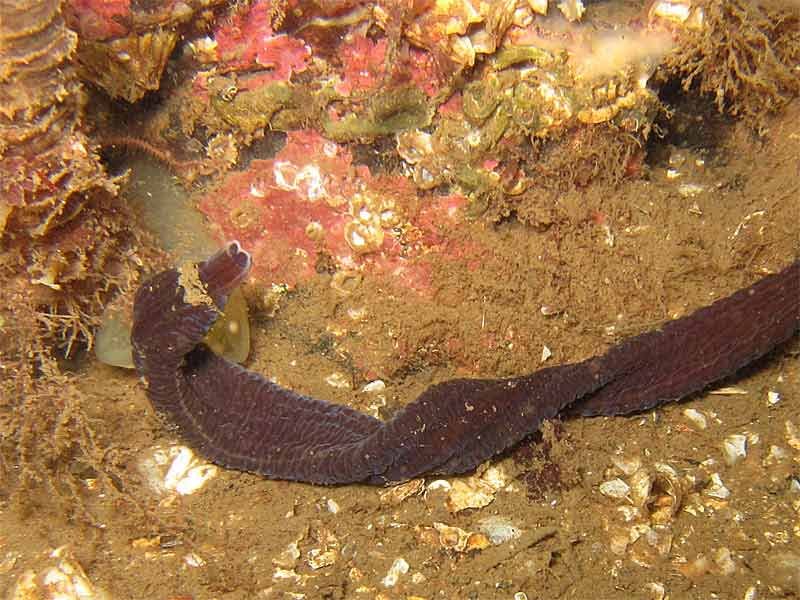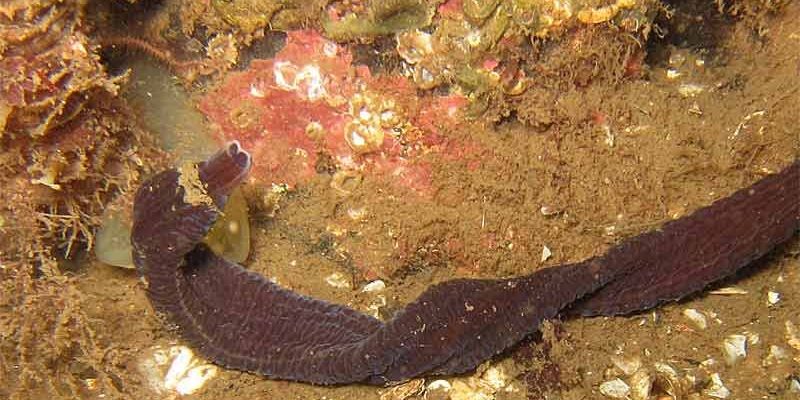
You might be wondering what makes these worms so special, especially considering their rather unassuming name. Bootlace worms, or *Lineus longissimus*, can grow to astonishing lengths—some even reach over 30 meters! That’s longer than a blue whale! Found primarily in colder waters, they thrive in environments like the North Atlantic and Arctic Oceans, where they contribute to the ecosystem in ways that might surprise you.
What Are Bootlace Worms?
Bootlace worms belong to the phylum Annelida, which includes segmented worms. These creatures are known for their incredible length, and they can appear almost like sea serpents when they glide through the water. They have a unique body structure, made up of many segments, allowing them to move smoothly and flexibly.
One of the standout features of bootlace worms is their soft, slimy skin, which can vary in color, often showing shades of green, brown, or even purple. This coloration helps them blend into their surroundings, making it easier to avoid predators. You might think of them as the chameleons of the sea floor, adapting to their environment for protection.
These worms are typically found buried in the sand or mud of the ocean floor, where they can wait patiently for food. They primarily feed on tiny organisms like plankton and other small invertebrates. When it’s feeding time, they extend their bodies to capture food, showcasing their remarkable reach!
The Role of Bootlace Worms in Their Ecosystem
Bootlace worms are more than just a unique specimen; they play a crucial role in their ecosystems. By feeding on organic debris and small marine organisms, they help break down nutrients, which are then released back into the environment. This process is essential for maintaining the balance in marine ecosystems.
You might compare this to how composting works on land. Just as decomposing organic matter enriches soil for plants, bootlace worms contribute to nutrient cycling in the ocean. This helps support the growth of various marine life forms and contributes to the overall health of the ecosystem.
Additionally, bootlace worms serve as a food source for various predators, including fish and birds. By being part of the food chain, they help sustain other species, creating a network of life that relies on balance and interdependence.
Behaviors and Adaptations
Bootlace worms exhibit some interesting behaviors that help them survive in cold-water environments. For instance, when threatened, they can quickly retract into their burrows, making it difficult for predators to reach them. This defensive behavior is crucial in an underwater world where danger can lurk around any corner.
Another fascinating adaptation is their ability to regenerate. If a bootlace worm loses a segment, it can grow it back! This regeneration capability is quite impressive, considering the lengths these worms can grow to. Imagine losing a part of your body and just growing it back—how cool is that?
Their flexibility and quick reaction to threats also allow them to navigate their environment effectively. They can move through tight spaces in the ocean floor, which helps them find food and avoid being eaten. It’s like a superpower for survival!
Bootlace Worms and Climate Change
Climate change is having a profound impact on marine ecosystems, including cold-water habitats where bootlace worms thrive. Rising ocean temperatures and changing acidity levels are affecting the food sources and habitats available to these and many other marine species.
Warmer waters can lead to the decline of plankton populations, which means less food for bootlace worms. This change can ripple through the ecosystem, affecting not just these worms but also the predators that rely on them. You might think of it like a domino effect—knock one down, and the rest follow.
Additionally, as sea levels rise and coastal environments change, the habitats where bootlace worms live are also at risk. Protecting these delicate ecosystems is crucial for maintaining biodiversity and ensuring that these fascinating creatures can continue to thrive.
Exploring Bootlace Worms: Research and Observation
Scientists are continually studying bootlace worms to understand their biology and ecological importance better. These studies often involve fieldwork in cold-water regions, where researchers observe their behavior and habitat preferences.
By using underwater cameras and remote monitoring devices, scientists can collect valuable data without disturbing these delicate creatures. This research helps us understand how bootlace worms interact with their environment.
Moreover, citizen science initiatives encourage everyday people to participate in monitoring marine life, including bootlace worms. If you’re near a coast with cold waters, you could help document these fascinating worms and contribute to ongoing research!
Conservation Efforts for Cold-Water Marine Ecosystems
Given the importance of bootlace worms in their ecosystems, conservation efforts focus on protecting their habitats. This includes monitoring pollution, managing fisheries, and regulating coastal development to ensure that these environments remain healthy.
Collaborative efforts between governments, marine organizations, and local communities are vital for creating effective conservation strategies. By working together, we can promote sustainable practices that help preserve cold-water ecosystems and the unique life forms, like bootlace worms, that call them home.
You might also consider getting involved with local organizations that focus on marine conservation. Raising awareness and supporting initiatives can contribute to making a real difference in protecting our oceans.
Final Thoughts on Bootlace Worms
Bootlace worms may not be the first creatures that come to mind when you think of marine life, but they are a crucial part of cold-water ecosystems. From their impressive lengths and unique adaptations to their role in nutrient cycling, these worms play an essential part in the health of our oceans.
Understanding bootlace worms helps us appreciate the intricate relationships in marine ecosystems and the importance of conservation efforts. Every creature, no matter how small or seemingly insignificant, has a role to play in the grand tapestry of life beneath the waves. So next time you think about the ocean, remember the remarkable bootlace worm and its contributions to a thriving marine world!

